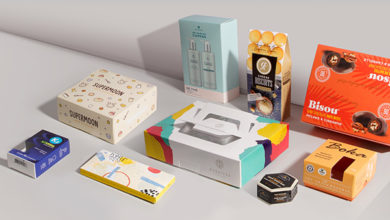How to Successfully Market Amazon Products

You can only get so far without knowing how to market Amazon products successfully, though.
Optimize their listings, and dramatically increase their sales volume over the past five years. We have helped hundreds of clients increase their organic rankings.
Introduction to Amazon Marketing
The marketing of your Amazon product consists of two main components. Traffic is the first. The world’s best product could be yours for an incredible price, along with persuasive copywriting and an unbeatable offer. But none of that will matter if no one ever sees your listing in the first place.
This is a very real possibility in 2019 when 4,000 items are sold every minute.
The main strategies for boosting traffic to your Amazon product are as follows:
- Organic Results
- Sponsored Items (Amazon PPC)
- Outside-the-Box marketing (Blog Placements, Affiliate Marketing etc)
- online advertising (Building Backlinks to Listings)
Listing optimization and product positioning make up the second major component of Amazon marketing. Even if you use all of the aforementioned techniques to increase traffic to a high standard. You won’t succeed if your product is unattractive or more expensive than those of your competitors.
You should pay attention to:
Your name, headings, and a brief description of your product
Your cost structure and USPs
Images of your goods and excellent content
Your critiques
Putting yourself in the buyer’s shoes will help you make all of those as compelling and effective as possible. This directly translates into people clicking away from your listing and looking for another. Which dampens the benefit of whatever strategies you’re using to drive traffic to your listing. For example, if your top review has a low rating or your product images are of poor quality.
However, if you get both of these rights, you can anticipate huge numbers of viewers and a high conversion rate of this traffic into buyers for your listing. As a result, your organic ranking keeps rising, and Amazon is convinced that your product is appealing, which motivates them to keep displaying it to more and more searchers. The secret to sustained sales on the Amazon platform is this.
Let’s examine each of these points in turn right now:
RANKINGS FOR ORGANIC ITEMS ON AMAZON
The term “organic rankings” is used to describe the arrangement of the items in the search results. If a product in the search results has the word “sponsored” next to it, this indicates that Amazon Sponsored Products was used to create the paid advertisement.
However, organic rankings make up the majority of all other search results. Amazon sets up the search results in the order that the products are most likely to result in a sale, which is how it works.
They will monitor the effectiveness of each product’s conversion into sales for each keyword. As a result, they are able to provide every searcher with the product that they are most likely to purchase and increase the number of searches that result in sales.
It becomes much simpler to generate long-term profits from Amazon if your product is the top organic ranking for a popular keyword. Unfortunately, if you enter a crowded niche, you might find that your organic ranking is on page 7.
Even worse, page 1 might be entirely dominated by well-known sellers who have been there for a while, have thousands of reviews, and have a high conversion rate for searches into actual sales. You won’t generate any sales if your product is several pages past these ones and has much fewer favorable reviews
According to virtual assistant services near me, Getting people to search for the relevant keyword and buy your product is the only difficult part. Each purchase informs Amazon that the item is highly relevant to the search term, which raises the ranking of your product.
Although “algorithm manipulation” is a broad term with little meaning in the Amazon Terms of Service, this would unquestionably fall under it.
PPC-Sponsored products from Amazon
You can place a bid on particular keywords through Amazon Sponsored Products to have your product appear above the naturally ranked products.
As was already stated, this isn’t a great long-term strategy because it deducts a percentage from each and every sale, and as soon as you turn it off, you lose all visibility and have essentially gained nothing.
Organic rankings require more effort and frequently cost more money, but once attained, they can permanently bring you full-priced sales.
However, this does not imply that PPC is not worthwhile. It will probably take some time to rank your products organically if you are in a highly competitive niche. With little effort, outbidding your rivals is a great way to secure early sales, and the money made from these sales can be invested in organic rankings.
A low bid on the same keywords can help improve the conversion rate of your product under that keyword and move the ranks higher. This is especially helpful if your organic ranking strategies are taking longer or being more difficult than expected. It’s also important to note that Amazon prioritizes products that pay for PPC and gives them a slight rank boost.
You can also find branded keywords, such as those that include your competitors’ brand names. These won’t require high bids because they won’t be targeted as much as more generic keywords, but by submitting a bid, you can appear next to their products and possibly steal some of their customers for next to nothing.
Visit our PPC training page to find out more about efficient PPC tactics and how to use them to quickly increase your sales!
OFF-PANEL MARKETING
The two primary methods for increasing your visibility and sales on the Amazon platform itself are organic rankings and PPC.
More than half of online product searches begin on Amazon, so you need to use them to your advantage if you want to be found.
However, there are still many excellent ways to promote your product outside of the Amazon platform.
PLACEMENTS ON BLOGS AND AFFILIATE MARKETING
Using blogs to market on Amazon
Customers struggle to know who to trust these days because there is so much marketing text everywhere
They frequently conduct online searches for solutions to their problem, such as “best camera phone for surfing” or “heavy-duty hair ties.”
As a result, there are millions of blogs spread out across the internet that promote the best products in their respective niches and top 10 lists.
Usually, an Amazon Affiliates account is used to monetize these websites. By contacting such blogs and requesting that they feature your product, you can achieve great success. Most of the time, it only involves replacing one product with one of yours. It’s a win-win situation because they will continue to produce the same volume of sales and receive the same cut from Amazon.
This is important to remember because blog placement can be inexpensive
The aforementioned tactics increases the listing by combining them with the number of people who see your listing
All the attention in the world won’t increase your sales, so the listing itself must still be appealing. Here comes the second item on our list of things to consider.
Let’s get started now:
BULLET POINTS, DESCRIPTION, AND TITLE
These are absolutely essential for drawing in searchers and converting them into customers.
For instance, you ought to pack the title with as many of the product’s benefits and selling points as you can. If the title of your product doesn’t address a viewer’s question, they might just scroll on until it does.
Two main considerations should take precedence in each of these three on-page sections. The first step is to use as many pertinent keywords as you can. Your listing will be found in more places if you can include more keywords in it.
Old school copywriting should be prioritized as the second item. Thus, your on-page text is your primary (and sole) opportunity to persuade them that the product is actually from you.
However, if you can effectively and persuasively convey the key benefits of your product, you’ve just closed a deal.
Product images and A+ brand content from Amazon
Up to 65% of people prefer to see something rather than read about it because they learn visually.
That’s a sizable number, and it’s crucial to take these people into consideration
We advise using product pictures that are:
- high quality and clarity
- high caliber and taken by skilled photographers
- Full of “benefit-driven” text that promotes the product’s advantages and the advantages of those advantages for the owner
- full of details and useful features. some people prefer to look at the pictures first.




